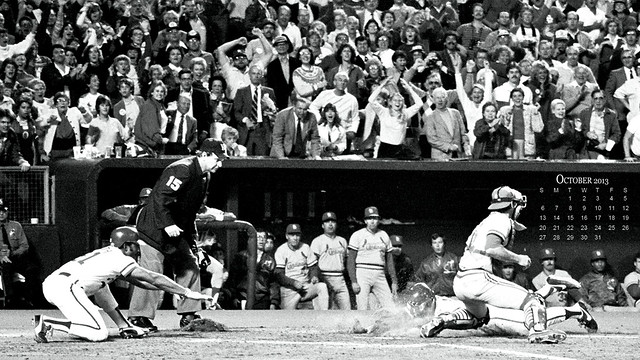Connie Mack Award (manager):
Joe Maddon - Tampa Bay Rays
Trying to choose the best manager is a strange thing. Just going with the biggest surprise team each year is kind of unsatisfying. Who knows how much credit the manager deserves for something like that? But after reading about Maddon in
The Extra 2%, following him on Twitter, and getting the sense that he's the perfect blend of a long-time baseball insider who is willing to listen to, and occasionally employ, new school theories, I do know that he would be my first pick to manage my favorite team. He deserves the award this year for this tweet alone:
Willie Mays Award (rookie):
Wil Myers - Tampa Bay Rays
No rookie had a truly great year in the AL, but that was mostly due to the Rays delayed call-up of Myers. He put up a 131
wRC+ and looked like he would have been a 4+ WAR player had he been given a full season.
Goose Gossage Award (reliever):
Greg Holland - Kansas City Royals
There were two relievers in a class by themselves this year, and choosing between Holland and Koji Uehara is almost impossible. I admit I'm biased as a Royals fan who watched Holland dominate all season. But I think the numbers back up my selection ever so slightly as well. Uehara had a better ERA (1.09 to 1.21), making him a fine choice for this award. But Holland had the upper hand when it comes to peripherals, which take on plenty of significance for me in the small number of innings that relievers throw. Among other things, Holland's jaw dropping 40.4 K% and league-leading 41
shutdowns tip the scales ever so slightly in his favor for me.
Walter Johnson Award (pitcher):
Max Scherzer - Detroit Tigers
Another extremely close call. A good case can be made for Scherzer, Chris Sale, Hisashi Iwakuma, Anibal Sanchez,
and Yu Darvish. In the end, Sherzer put together the most solid all-around season, grading out as elite from both runs-allowed and fielder-independent perspectives. Scherzer was also more consistent than the others. I rate 26 of his 32 starts as being good to excellent, more than any of my other candidates. (Scherzer did face easier competition than most AL pitchers, but even adjusting for that, he kept them in check better than anyone else.)
Stan Musial Award (MVP):
Mike Trout - Los Angeles Angels
I cannot believe Trout and Miguel Cabrera put on repeat performances of 2012, but here we are. We're all tired of talking about it, but it remains true that Cabrera is the marginally better hitter, but Trout does everything else so much better that Trout is the best in the game right now.


















































